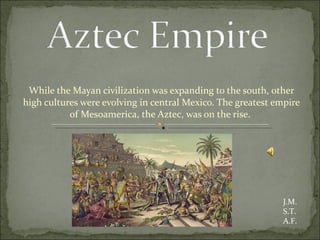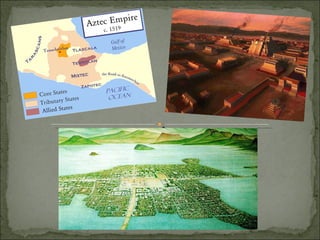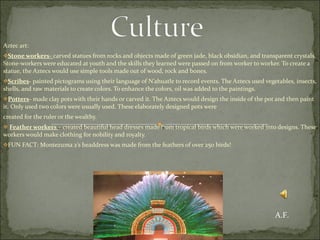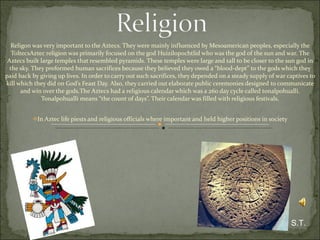The Aztec civilization originated in Mexico and built the great city of Tenochtitlan in the Valley of Mexico. By the early 1500s, Tenochtitlan had grown to a large urban center and capital city of the powerful Aztec Empire, which controlled most of modern-day Mexico. However, the Aztec Empire began to decline due to factors such as disease, warfare and the arrival of the Spanish conquistadors in the early 16th century.










